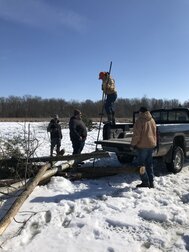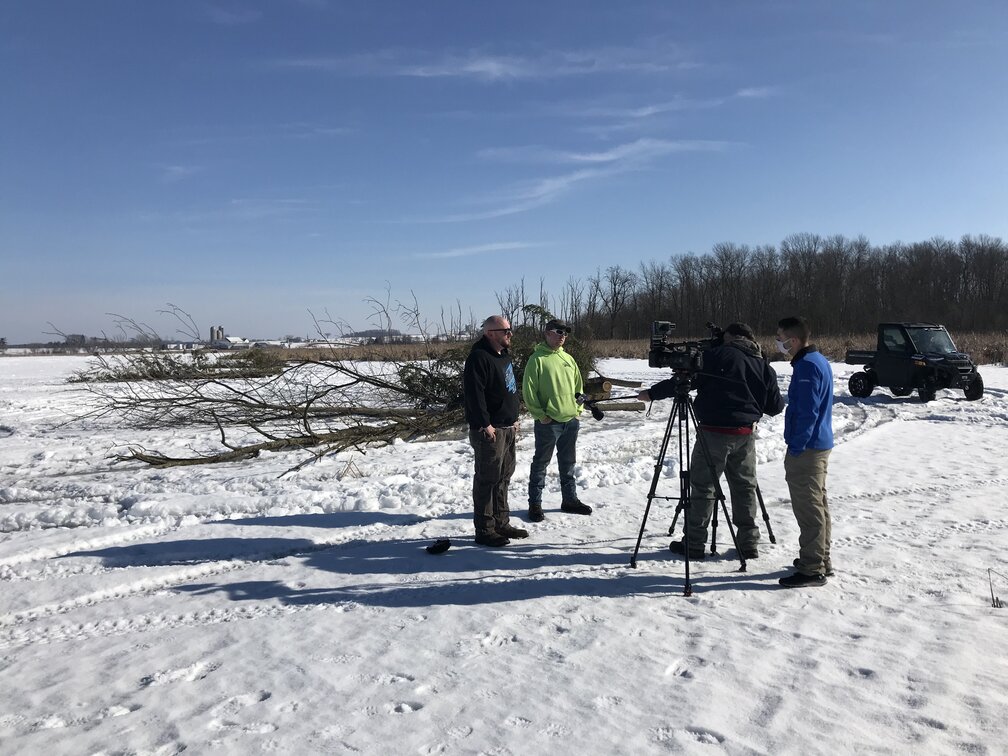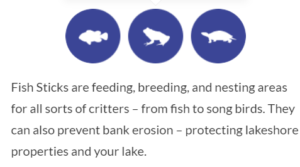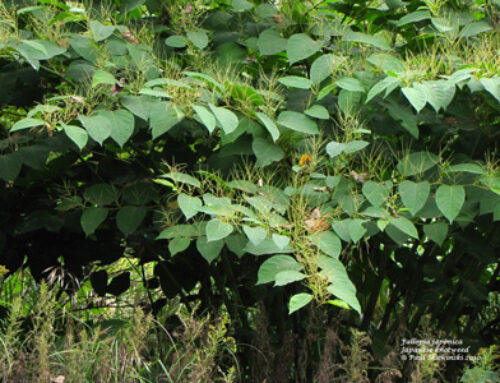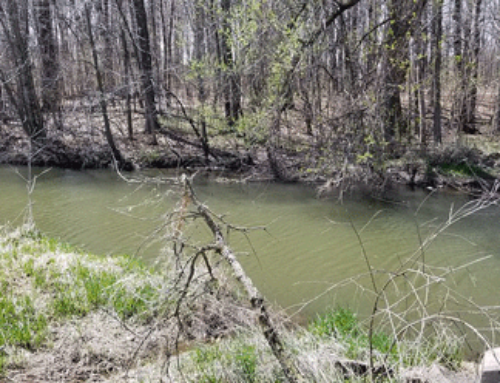And we aren’t talking about the food!
T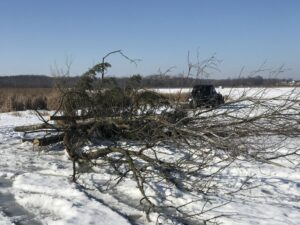 he White Clay Lake Protection and Rehabilitation District worked with East Central Wisconsin Regional Planning Commission to develop a lake management plan for the White Clay Lake. This plan was approved in 2019 and included a goal of improving fish habitat around the lake.
he White Clay Lake Protection and Rehabilitation District worked with East Central Wisconsin Regional Planning Commission to develop a lake management plan for the White Clay Lake. This plan was approved in 2019 and included a goal of improving fish habitat around the lake.
The White Clay Lake P&R District, partnered with the White Clay Lake Sportsmen Club, applied for, and received a Healthy Lakes Grant in 2019 to install fish sticks around the lake. Due to poor ice conditions in 2020, the installation was postponed but thanks to the cold snap in February 2021, ice conditions were favorable to get the tree bundles on to the ice.
What are fish sticks?
The Healthy Lakes & Rivers program of the Wisconsin DNR describes fish sticks as an in-lake best practice that utilizes large woody habitat structures created with grouping whole together, resulting in the placement of more than 1 tree per 50 feet of shoreline. Fish sticks are anchored to the shore and are partially or fully submerged. Fish sticks are not tree drops since the trees utilized for the projects come from further than 35 feet from shore, thus they don’t “rob from the bank” of trees that may otherwise grow and fall in naturally
White Clay Lake is a little different than image that comes to mind when you think of your favorite lake. White Clay Lake contains a large monotypic stand of cattails surrounding the shallow areas of the lake. Behind these cattails are mostly agricultural lands. The combination of cattails and agricultural lands has made it hard for trees to naturally fall into White Clay Lake creating woody habitat.
White Clay Lake is considered impaired due to the levels of phosphorus found in the lake, creating additional stressors for the aquatic organisms living in and around the lake. The water from White Clay Lake ultimately ends up in Shawano Lake after passing through Mud Lake via Pickerel Creek.
around the lake. The water from White Clay Lake ultimately ends up in Shawano Lake after passing through Mud Lake via Pickerel Creek.
Volunteers for this project started the day by cutting trees and dragging them out onto the ice.
Once trees were out on the ice, volunteers guided the trees into place with assistance from a UTV with towing capabilities.
Due to the shoreline make up of the lake, it can make anchoring the fish sticks tough. The White Clay Lake Sportsmen Club and District drilled holes to drop anchors down, ensuring the trees will stay put.

As temperatures rise, the ice underneath the trees will melt more quickly, allowing the trees to drop into the lake. These trees will settle into the sediment and create great habitat for the spring.
The plan is to add up to 20 more tree bundles over the next four years.
Due to the depth of muck in the lake, the volunteers got creative with getting the anchors in ground.
